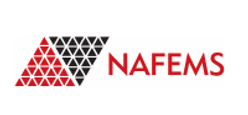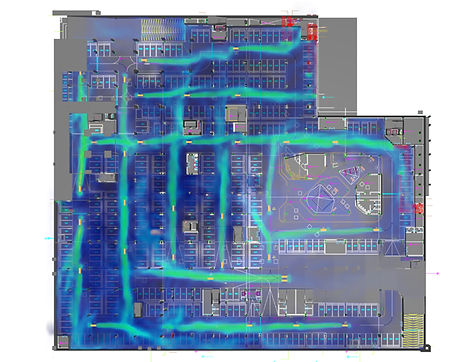
Computational Fluid Dynamics (CFD)
%20(7).png)
%20(7).png)

SANA Engineering company has experience applying state-of-the-art Computational Fluid Dynamics (CFD) methods to assess, validate, and optimize engineering processes, systems, and products.
SANA provides the CFD analysis for HVAC systems Like a Data Center HVAC Cooling Room, generator Room, Communications Shelter, IDF Room, Electrical Room, Low Voltage Room (LV), UPS Room, Football Stadium Ventilation and Atrium Ventilation, Also provides CFD analysis for Jet Fan applications in car parking and tunnel to evaluate the performance of ventilation systems for vehicle pollutant control, smoke extraction to assist the fire service in the event of a fire.
SANA offers these services in Saudi Arabia (KSA), United Arab Emirates (UAE), Qatar, Oman, Kuwait, Jordan, Egypt, Yemen, India, Iran, Turkey, Japan, United Kingdom (UK), United States (USA), Canada, Australia, Spain, Italy, Germany, Denmark, Portugal, Bulgaria, and across Europe and the Emirates.
At SANA Engineering, we are proud to be licensed users of Ansys Software, the leading industry-standard tool for advanced computational fluid dynamics (CFD) simulations. Enabling SANA CFD Team to deliver precise and reliable solutions for optimizing thermal management and airflow across diverse environments for our clients.
SANA is an active member of NAFEMS, the International Association dedicated to Engineering Analysis, Modeling, and Simulation. This membership demonstrates our commitment to delivering high-quality CFD solutions and staying aligned with global best practices.

Advantages of CFD Analysis
Our Scope of Work in Computational Fluid Dynamics (CFD)
A CFD (Computational Fluid Dynamics) analysis for a car parking ventilation system involves simulating the airflow and air quality within the parking structure to ensure a safe, comfortable, and efficient environment. The objective is to design and optimize the ventilation system to manage air movement, temperature, and humidity while controlling the dispersion of pollutants, such as carbon monoxide (CO)

Car Parking a Ventilation System Simulations for CO , CO2
The percentage of carbon monoxide (CO) emitted from cars must not exceed the limit permitted by ASHRAE Standards,
due to the dangers of this gas to occupancy and environment.
CFD analysis enable the engineers to ensure car parks and tunnels are ventilated to prevent the accumulation of toxic fumes
and flammable gases is extremely important

Toxic Gases
Analysis
By utilizing CFD simulation, it assist the engineers in designing an effective smoke managment system
for atriums, platforms, concourse and mezzanine.
A recommendation is provided to ensuring safety and compliance with industry standards.
This approch adhered to international standards and local codes such as:
NFPA, SFPE,
ASHRAE and Saudi Building Code

Atrium Smoke
Evacuation
By creating 3D model and generating a precise mesh, CFD analysis able to produce an accurate mist dispersion and airflow prediction.
CFD simulation of mist system
allow the designers and engineers to evaluate and analyze the cooling effects, humidity distribution and air circulation.
Also provide a recommendation
to improve cooling and energy efficiency.
-min.webp)
Misting System
Simulation
A CFD is powerful tool for generator room,
that provide a valuable insight
into heat distribution, air circulation, and exhaust flow.
These insights enable the engineers
to improve air quality
and overall system efficiency.
In addition, identifying areas for improvement
to enhance safety and compliance
with environmental standards

Generator Rooms
Cooling Tower Performance Analysis evaluates how efficiently a cooling tower cools water by removing heat. This analysis considers factors like a (difference between the outlet water temperature and wet-bulb temperature), airflow rate, water flow rate, and ambient conditions.
By analysing these parameters, engineers can assess the tower’s effectiveness, identify inefficiencies and determine maintenance needs.

Cooling Tower
Performance Analysis
Water CFD analysis involves simulating and analyzing the behavior of water flow in various applications to optimize performance, efficiency, and safety.
It is widely used in designing water distribution systems, wastewater treatment plants, passive mixing system, hydraulic structures, and cooling systems.
\By modeling fluid flow, pressure distribution, and turbulence, CFD helps identify potential issues such as flow stagnation, pressure losses, and cavitation.
-min.webp)
Water
CFD Analysis
Fire Dynamics Simulator (FDS) empowers engineers to accurately simulate fire phenomena, enabling the prediction of smoke behavior, temperature distribution, air movement and toxic gas concentration levels during fire development. Developed by the American National Institute of Standards and Technology (NIST), FDS is open-source software that utilize computational fluid dynamics (CFD) for modelling and simulating thermally driven, low-speed flow scenarios.

Fire Dynamic
Simulations
Heat Exchangers are a major component of the refrigeration and air conditioning system, the performance of the condenser will have a direct influence on the system efficiency By utilizing CFD simulation, it can help engineers and designers to predict and find the optimal performance for heat exchangers under different conditions. It enables engineers to validate the design against expected loads, ambient conditions, and operational parameters

Chiller Performance
Simulation
The importance of CFD in simulating the efficiency of the data center’s cooling system to prevent damage caused by high temperatures and ensuring the optimal performance of racks. The objective is to enable the engineers to evaluate data center’s cooling system performance, to avoid factors such as increased rack heat load, change in equipment layout, mitigating failure scenarios
and resolving potential leakage issues

Data Center’s Cooling
System
Thermal comfort is usually assessed against standards, like ASHRAE 55 and ISO 7730, which provide criteria for comfortable temperature ranges and acceptable environmental conditions. Computational Fluid Dynamics (CFD) is often used in these analyses to simulate airflow, temperature distribution, and other factors, allowing designers to adjust layouts, HVAC systems, and other elements to achieve optimal comfort.

Thermal Comfort
Analysis
Smoke and evacuation modelling simulates how smoke, heat, and toxic gases spread during a fire, as well as how occupants can safely evacuate a building. We uses Computational Fluid Dynamics (CFD) to understand smoke propagation, visibility, temperature, and toxic gas concentrations, ensuring safe zones and effective ventilation. Evacuation modelling focuses on crowd dynamics, exit routes, visibility, and behavioural factors to minimize evacuation times and identify bottlenecks
-min.webp)
Smoke and Evacuation Modelling
Computational Fluid Dynamics (CFD) analysis for a football stadium involves simulating and evaluating airflow patterns, thermal conditions, and environmental factors to optimize the design and performance of the facility. This analysis helps assess the effects of wind on spectator comfort, structural safety, and roof aerodynamics while ensuring proper ventilation throughout the stadium. It can also predict microclimatic conditions, such as temperature distribution and pollutant dispersion, to enhance air quality and energy efficiency.

Football Stadium
CFD Analysis
This simulation analyzes the impact of a helicopter rotor on the
helipad and surrounding buildings, considering both rotor-induced airflow and natural wind conditions. The results show the formation of vortices and turbulence near building edges due to the interaction between the wind, structures, and rotor wash. High- velocity zones were observed, particularly where the airflow converged, creating recirculation effects. These findings highlight the need for potential design modifications, such as wind barriers or structural adjustments, to improve safety and minimize turbulence disturbances.

Helicopter Rotor Effects on the Helipad and Surrounding Buildings
CFD Projects
 |  |  |  |
|---|---|---|---|
 |  |  |  |
 |  |  |  |
 |  |  |
CFD Team Contact Details:



.png)

